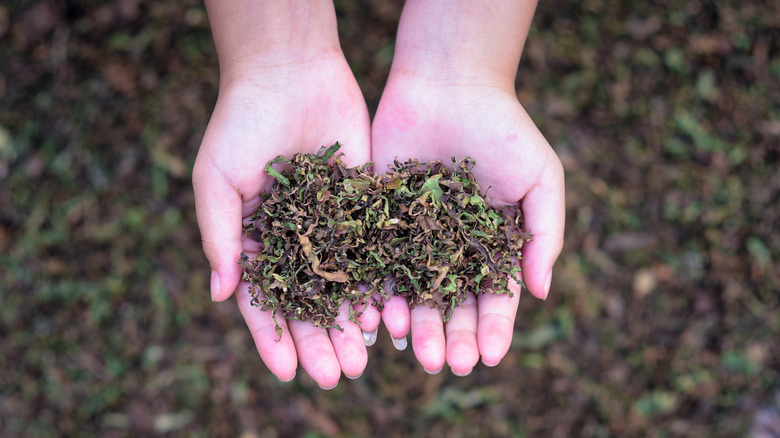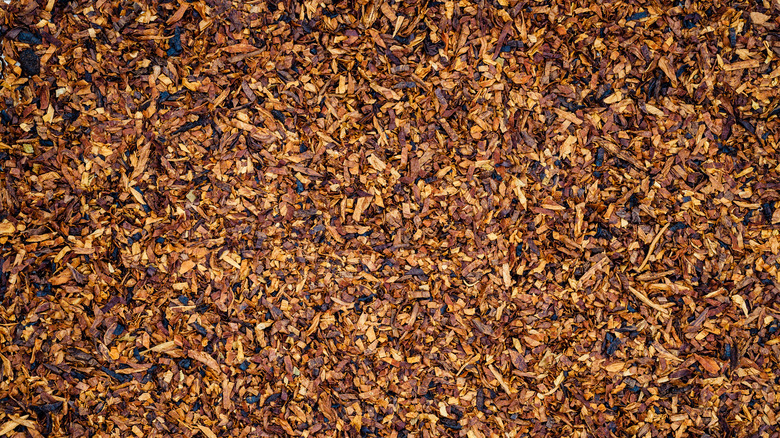Is There Any Reason To Cook With Tobacco?
Tobacco has always been associated with two things: smoking and chewing (which are both equally disastrous). Much has been said about smoking tobacco, chewing tobacco, and even passive secondhand smoke inhalation, all of which can lead to deadly ailments that can be credited to the nicotine present in tobacco, according to Tobacco Free Co. So it's no surprise that most of us wouldn't even fathom keeping tobacco in the kitchen, let alone cooking with it. But it turns out, more and more people around the world are cooking with the seemingly hazardous ingredient.
An early 2001 New York Times article claims that chefs who cook with tobacco choose the ingredient for its spice. Another says that tobacco "has a heat as searing as a chili pepper" and vouches for its flavor: "Tobacco adds a haunting richness that recalls an oak-aged spirit, with notes of leather, wet earth, and sweet mulled-wine spices." While tobacco's peculiar flavor profile is what has made the ingredient popular amongst chefs keen on experimenting and pushing the flavor of foods beyond what they can be, there is reason to believe that tobacco is nutritious, too — but only if you take away the nicotine.
Tobacco has some of the healthiest levels of protein
According to The New York Times, tobacco leaves are indigenous to North and South America where they have long been used for all sorts of medicinal purposes. Tobacco leaves are used as an antiseptic on cuts, its smoke is blown into ears to cure aches and, when brewed into a tea, tobacco leaves have been used as a laxative, an expectorant, and even to help with headaches, as well as spells of dizziness, according to the University of Texas-El Paso).
Mental Floss also says that tobacco plants may have another surprising nutritional quality that is of great value: they might be amongst some of the healthiest forms of natural plant-based protein. Tobacco plants contain a type of protein known as Fraction-1-protein. The protein gives off no odor or color, is non-allergenic, and has an amino acid composition that lowers cholesterol. Tobacco's Fraction-1-protein, the site says, is even better than that found in other protein-rich foods such as soy, dairy, and corn. Specialty Produce reports that even the World Health Organization's Farm and Agriculture Organization declared that tobacco leaves may indeed be a functional food in 1981.
The only problem with tobacco is its nicotine. While Fraction-1-protein, when correctly extracted from tobacco leaves, can be safe to consume and can even offer incomparable nutritional value, eating raw tobacco leaves as they are can have harmful effects, including nicotine poisoning.

